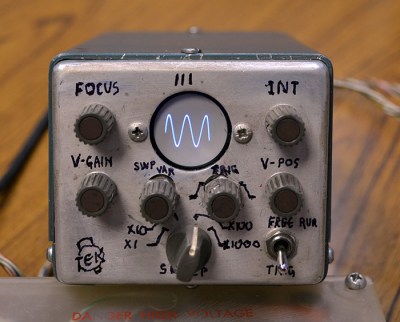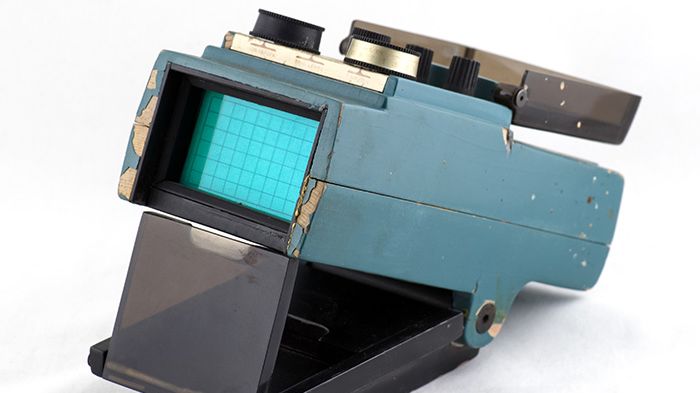There aren’t many brands that inspire the kind of passion and fervency among its customers as Tektronix does. The venerable Oregon-based manufacturer of top-end test equipment has produced more collectible gear over the last 75 years than just about anyone else.
Over that time they have had plenty of innovations, and in the 1970s they started looking into miniaturizing their flagship oscilloscopes. The vintageTEK museum, run by current and former employees, has a review of the design process of the 200 series of portable oscilloscopes that’s really interesting. At a time when scopes were portable in the way a packed suitcase is portable, making a useful instrument in a pocketable form factor was quite a challenge — even for big pockets.
 The article goes into great detail on the back-and-forth between the industrial designers, with their endless stream of models, and the engineers who would actually have to stuff a working scope into whatever case they came up with. The models from the museum’s collection are wonderful bits of history and show where the industrial designers really pushed for some innovative designs.
The article goes into great detail on the back-and-forth between the industrial designers, with their endless stream of models, and the engineers who would actually have to stuff a working scope into whatever case they came up with. The models from the museum’s collection are wonderful bits of history and show where the industrial designers really pushed for some innovative designs.
Some of the models are clearly derived from the design of the big bench scopes, but some have innovative flip-down covers and other interesting elements that never made it to production. Most of the models are cardboard, but some were made of aluminum in the machine shop and sport the familiar “Tek blue” livery. But the pièce de résistance of the collection is a working engineering model of what would become the 200-series of miniscopes, a handmade prototype with a tiny round CRT and crudely labeled controls.
The vintageTEK museum sounds like another bucket-list stop for computer and technology history buffs. Tek has been doing things their own way for a long time, and stopping by the museum is sure to be a treat.
Thanks to [Tanner Bass] for the tip.
















Living in Portland, I’ve been to the Vintage Tek museum a few times. It’s right next door to the Tek Company Store, which has lots of surplus Tek gear, and is definitely a good hunting ground. Anyway, I haven’t been to the museum since the 200 series mockups have been added, but there are a good number of other one-offs and prototypes there.
I have a Tektronix 321a (an eBay find, not from the Company Store), for which I can imagine that unit pictured with the 1″ tube may have been an early concept prototype. I love how they included the Tek logo on the front panel! The 321A uses a 3″ round tube, and was Tek’s first all-solid-state (except for the CRT, of course) ‘scope.
Same, I have been there a few times before they moved to their new location and after, I have also adjured some of their tooling. My CNC mill came out of their model shop and I have the laser welder that was used to weld up their electron multiplier CRTs.
That little hand drawn Tek logo is really the cherry on the pie, i love it!
I have an old Hickok O-scope with a 1″ CRT.
I’ll have to get around to putting a new power cord on it one of these days…
I have a Tek PowerScout, which is a great little scope. It’s a portable 2-channel 100mHz scope, which fits my needs as a hobbyist. Great stuff!
100mHz? Once every ten seconds?
Some of these designs made me think of the original Star Trek series tricorders. I never knew such small scopes existed.
Your comment makes me wonder if the tricorder was an influence on these designs in some way.
Oh yeah, I got an immediate “tricorder” feeling from those too. And I love Tektronix equipment, still have lots of that vintage at work …
I saw one of these at a hamfest for $20 a few years back, and now I wish I had just ponied up the cash and bought it. I was collecting test equipment back then, but was feeling the pinch of having already spent most of my money that day, so I didn’t add that one to my collection. Oh, well. I’m sure someone else is enjoying it now. :)
Worked at a U.S. DoD T&E place many years past. Used and abused Tek 212s in and around M151s, hummers, M60s and M1 tanks, AAVs, LAVs, and numerous weapons systems on the test range. The battery pack was over 50% of the unit’s mass.